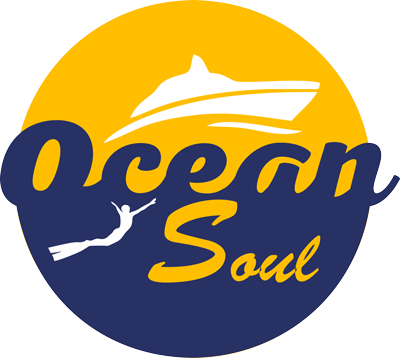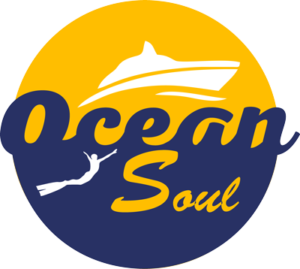The dive sites of the “Best of Tour”
The elongated reef Elphinstone is undoubtedly one of the most beautiful dive sites in Egypt – a “must be” for every diver. On the north side, a plateau extends gradually from 18m to 55m in depth. There it is worth looking out for big fish: gray reef sharks, hammerheads, longimanus and tiger sharks pass by. Then you drift east or west along the breathtaking cliff, which is beautifully overgrown with gorgonians, wire corals and various soft corals. The plateau in the south is somewhat wider, overgrown with coral blocks and turns into a drop off at a depth of about 45m. Blue fusiliers, barracudas, mackerels, Napoleons, but also one or the other turtle cavort there.
Far away from the coast, the 600-800m wide Daedalus Reef rises from the depths of the sea, on whose reef roof a large lighthouse was built in 1863. The Daedalus Reef is surrounded by a steep wall and has a plateau on the south side. This plateau is colorfully overgrown up to the flat area, turtles like to stay there, but also a lot of schooling fish. It is worth taking a closer look to discover snails, scorpion fish or stone fish. It is not uncommon for a thresher shark to look past the plateau, as the participants of our last safari there can certainly still remember!
There is usually a clear current at the northwest tip, but you have a good chance of encountering hammerhead sharks. While drifting along the west side you come across Anemone City: a colony of anemones that looks like a giant flokati carpet in the current. The fish population is impressive: schools of fusiliers, surgeon fish and mackerel, more diverse and lush than anywhere else.
The former sapphire mining island Zabargad is a diving area that is particularly characterized by its versatility. Here you can dive along steep walls, float over drop-offs, experience the open water feeling at the edge of the break, circle coral towers in the protected flat area and explore indentations, watch fish or simply admire this unique coral garden while diving past.
Rocky Island is a legendary dive site that makes every diver’s heart beat faster. The fringing reef that surrounds the entire bird breeding island encourages the growth of all sorts of life forms. These seem to be fighting for a spot on the reef in constant competition. The reef walls are full of the most beautiful soft corals, they share the space with gorgonians, sponges and fan corals. Due to its exposed location and the small size of the reef, Rocky Island is a very lively reef. Reef sharks, especially gray reef sharks and silver tip sharks, can be seen in the open water, and with a bit of luck, manta rays and dolphins will provide a little endorphin surge.
Deep, deep in the south are the St. John’s Reefs . This group of reefs offers the diver an almost untouched underwater world. Breathtaking steep walls at Big Habili and Small Habili, overgrown with large fan corals, gorgonians and soft corals in all possible colors, promise fantastic dives. Like ice cream cones, these two reefs rise from the depths and end about 5m below the surface of the water. A look into the blue water can be extremely worthwhile: large fish such as sharks, barracudas, or schools of mackerel and tuna are not uncommon here. But mantas and dolphins are also possible. Umm Erug is probably the birthplace of bizarre coral blocks. At a depth of 12 to 30 m, there are various blocks next to the main reef, which in their shape and size are reminiscent of many everyday figures. Heavily populated by schooling fish, moray eels and camouflage artists of all kinds, a night dive on the main reef is also worthwhile. Furthermore, St. John’s offers dive sites with unique cave systems. The passages, which are mostly open to the top, are easy to dive, and the play of light on the light sandy bottom is unique. Hatchet-bellied fish gather in darker corners, blue-spotted rays look for crabs in the sand …
The safari price includes:
- Transfer from Hurghada airport to the ship
- 6 days safari, ½ double cabin, possibly last night in a 3 * hotel
- full board
- tea, coffee, water, soft drinks
- 3-4 dives per day, last day 2 dives
- local guides
< li> 12 liter diving bottle, lead
Additional costs on site:
150, – € for the Egyptian entry visa and the reef fees (as of 01 / 2021),
35, – € Port Ghalib port fees (when departing from Port Ghalib / Marsa Alam)
Surcharges for 15 liter bottles, nitrox and rental equipment.
The flights can be booked individually according to the current daily price, or combined into a package.
In the Egyptian marine protected areas there is a minimal diving experience of 50 dives
mandatory.

